Exploring Dehua Kiln Sites: The Heart of Porcelain Craftsmanship
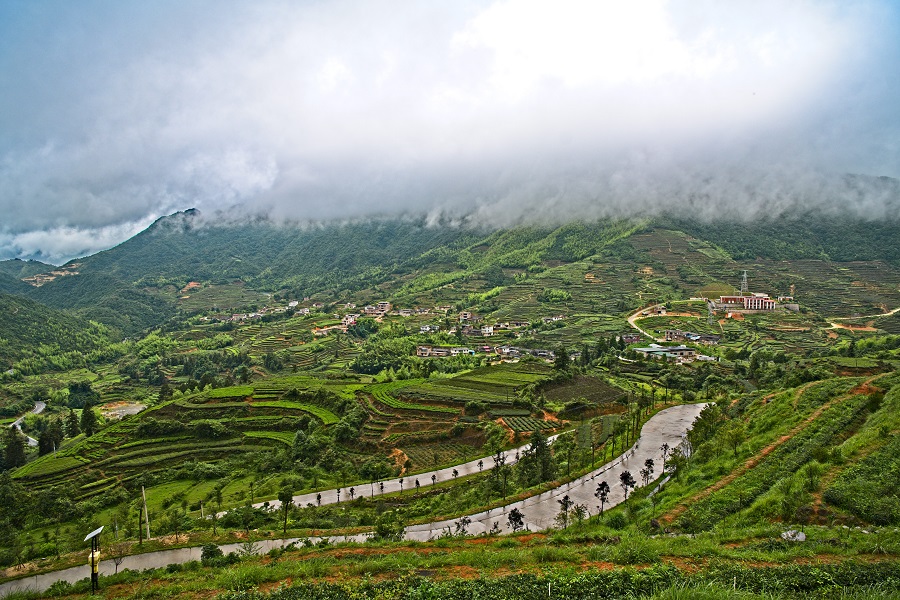
An Essential Guide to Visiting Dehua Kiln Sites
Nestled in the heart of Fujian Province, Dehua County is a treasure trove for those captivated by the art of porcelain. Known as the “Porcelain Capital of China,” this charming region boasts a rich history of ceramic production that dates back centuries. Among its many attractions, the Dehua Kiln Sites stand out as a testament to the extraordinary craftsmanship that has made Dehua ceramics coveted by collectors and connoisseurs worldwide, especially during the 1800s.
As you embark on your journey to explore these historic sites, you’ll encounter the mesmerizing dragon kilns—long, narrow structures that climb the hillsides, each telling a story of the artistic traditions and innovations that have shaped the local culture. Here, you can witness the delicate balance of time-honored techniques and modern artistry, as skilled artisans continue to breathe life into the age-old craft of porcelain making.
Visiting the Dehua Kiln Sites is more than just a glimpse into the past; it’s an immersive experience that allows you to appreciate the intricate beauty of Dehua’s famed blanc de chine ceramics. With informative signage available in English and the opportunity to take photographs, you’ll feel connected to the rich heritage that permeates this enchanting landscape. Whether you’re a seasoned collector or simply an admirer of fine art, the Dehua Kiln Sites promise to inspire and captivate, leaving you with lasting memories of your time in this porcelain paradise.
In This Guide
- An Essential Guide to Visiting Dehua Kiln Sites
- The Rich History and Legends of Dehua Kiln Sites
- Main Highlights: What You Absolutely Can’t Miss
- Planning Your Visit: A Practical Guide
- Tickets: Prices, Booking, and Tips
- How to Get There: A Complete Transportation Guide
- Local Cuisine and Accommodation Nearby
- Frequently Asked Questions
- Final Thoughts on Your Trip
The Rich History and Legends of Dehua Kiln Sites
Dehua County, nestled in the Fujian Province of China, boasts a rich legacy that dates back over 1,000 years, making it a crucial player in the world of porcelain and ceramics. The Dehua Kiln Sites, renowned for their exquisite craftsmanship, are a testament to this storied history. Here, skilled artisans have continuously shaped and fired fine porcelain, contributing to Dehua’s prestigious reputation as the “Porcelain Capital of China.”
The origins of the Dehua kiln industry trace back to the Song Dynasty (960-1279), when the region’s rich clay deposits were first exploited to create functional and decorative pottery. It was during the Ming Dynasty (1368-1644), however, that Dehua porcelain truly began to flourish. The famous “blanc de Chine” or “white of China” emerged from the kilns, characterized by its brilliant white glaze and delicate forms. These creations captured the hearts of both domestic and international collectors, establishing Dehua as a key center for porcelain trade.
As the 18th and 19th centuries approached, the demand for Dehua ceramics surged, particularly among European collectors. The intricate designs and quality of craftsmanship appealed to the tastes of the time, leading to a significant export market. The dragon kilns, long and climbing structures built into the hillsides, became emblematic of Dehua’s production methods. These kilns allowed for the efficient firing of large quantities of porcelain, showcasing the innovative spirit of the local artisans.
Beyond the production of ceramics, the kilns are steeped in local legends and cultural significance. Many artisans drew inspiration from the natural beauty surrounding the kilns—mountains, rivers, and forests shaped the artistic direction of their works. The mystical landscapes of Jiuxian Mountain, known for its enchanting rock formations and Taoist legends, often found their way into the motifs and designs of Dehua porcelain. This connection between nature and art has not only enriched the cultural tapestry of the region but has also attracted visitors and enthusiasts from around the globe.
Today, the Dehua Kiln Sites stand as a historical landmark, inviting travelers to explore the rich heritage of porcelain production. Visitors can wander through ancient workshops, witnessing firsthand the age-old techniques still employed by artisans, and marvel at the intricate pieces that have survived through the centuries. With informative signage available in English and opportunities for photography, the kilns offer an engaging experience for anyone interested in the art of ceramics.
In essence, the Dehua Kiln Sites are not merely remnants of a bygone era; they embody the spirit of innovation, craftsmanship, and cultural identity that defines Dehua County. As travelers explore these historic sites, they embark on a journey through time, discovering the layers of history and the legends that have shaped this remarkable region into what it is today.

Dehua Kiln Sites.
Main Highlights: What You Absolutely Can’t Miss
The Dehua Kiln Sites, nestled in the heart of Dehua County, Fujian Province, are a treasure trove for anyone intrigued by porcelain culture and history. Here are the must-see highlights that make this destination truly unforgettable:
1. The Dragon Kiln
This iconic kiln, known as the Dragon Kiln, is a remarkable relic of the ancient porcelain-making tradition. Located within a schoolyard, it may take a bit of effort to find, but it’s well worth the journey. As you stand before this long, slender structure climbing the hillside, you’ll appreciate its historical significance in producing the celebrated Dehua, or Blanc de Chine, ceramics that captivated collectors worldwide in the 1800s. Look for the informative signage in English, which sheds light on the kiln’s fascinating history, and don’t forget to snap some photos!
2. Dehua Ceramics Museum
A visit to the Dehua Ceramics Museum is essential for understanding the evolution of porcelain in this region. Housing over 5,000 exquisite ceramic pieces, this museum is the first of its kind in Fujian and showcases the craftsmanship that has made Dehua the “Porcelain Capital of China.” Explore the rich history of Dehua porcelain, from its origins in the Song and Ming dynasties to modern innovations. This is a perfect starting point for anyone looking to deepen their knowledge of ceramic art.
3. Ancient Kiln Sites and Workshops
Wander through the various ancient kiln sites scattered throughout Dehua, where the art of porcelain firing has been practiced for centuries. Some workshops still utilize traditional wood-firing methods, allowing visitors to witness the intricate processes involved in porcelain production firsthand. This experience is particularly appealing for those interested in the backstory behind the products they may later purchase.
4. Jiuxian Mountain Scenic Area
Just a short drive from the kiln sites lies the Jiuxian Mountain Scenic Area, a place where natural beauty and artistic inspiration converge. Known for its mystical rock formations and rich Taoist legends, this site has inspired countless ceramic designs. As you hike through this breathtaking landscape, keep an eye out for unique patterns and motifs that reflect the mountain’s influence on local artisans.
5. Shiniu Mountain National Geopark
Shiniu Mountain is not only a geological wonder with its dramatic volcanic landforms but also a significant contributor to the clay resources essential for Dehua ceramics. Explore this “Porcelain Landscape” and discover how the area’s natural features have inspired local sculptural ceramics. Look for souvenirs that showcase Shiniu Mountain themes, which make for perfect mementos of your visit.
6. Yunlong Valley
Known as a natural “oxygen bar,” Yunlong Valley is a stunning area filled with lush forests, cascading waterfalls, and quaint traditional villages. This serene environment is home to artisan communities that craft beautiful ceramic tea sets and coffee mugs. Engage with local artisans and appreciate the cultural significance of their work, which often reflects the region’s rich ecological diversity.
7. Local Dining Experiences
While exploring the Dehua Kiln Sites, be sure to indulge in the local cuisine. Nearby restaurants offer a delightful array of dishes, allowing you to experience the flavors of Fujian Province. The culinary offerings are a perfect complement to the artistic journey through Dehua’s porcelain heritage.
Each of these highlights offers a unique glimpse into the rich tapestry of Dehua’s ceramic culture, making your visit not just a tour but an immersive experience. Whether you’re a ceramics enthusiast, a history buff, or simply a curious traveler, the Dehua Kiln Sites promise memories that will last long after your journey ends.
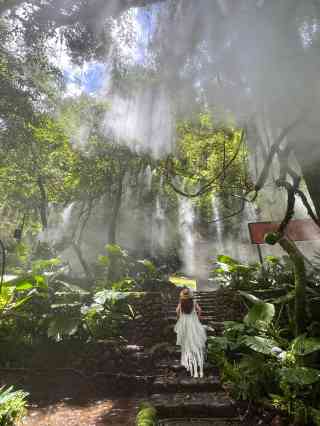
Dehua Kiln Sites.
Planning Your Visit: A Practical Guide
Planning Your Visit to the Dehua Kiln Sites
Visiting the Dehua Kiln Sites in Fujian Province offers a unique glimpse into the rich ceramic heritage of China, showcasing the renowned Dehua porcelain, also known as Blanc de Chine. Whether you’re an art enthusiast, a history buff, or simply a curious traveler, this guide will help you navigate your visit to this fascinating destination.
Getting There
Location: The Dehua Kiln Site is located in Baomei Village, Xunzhong Town, Dehua County, Fujian Province.
Transportation:
– By Air: The nearest major airport is Quanzhou Jinjiang International Airport (JJN), approximately 60 kilometers away. From the airport, you can take a taxi or arrange for a private transfer to Dehua.
– By Train: If you are traveling from nearby cities such as Xiamen or Fuzhou, you can take a train to Dehua County. The railway station is well-connected to various cities across China.
– By Bus: Long-distance buses run from major cities in Fujian to Dehua. Check local schedules for timings.
Opening Hours and Admission
The Dehua Kiln Sites typically have flexible visiting hours, but it’s advisable to visit during daylight to fully appreciate the surroundings. Most sites open around 8:00 AM and close by 5:00 PM. Admission is usually free or involves a nominal fee, but check local signage upon arrival for specific information.
What to Expect
Dragon Kiln: One of the highlights of your visit will be the well-preserved dragon kiln, known for its traditional long and thin structure that climbs the hillside. It is located in a schoolyard, making it a unique yet somewhat challenging find. Look for signage that will guide you.
Cultural Insights: The kiln sites offer a fascinating insight into the history of Dehua ceramics, which gained immense popularity among foreign collectors in the 1800s. English signage is present, so non-Mandarin-speaking visitors can easily navigate the area.
Photography: You’re welcome to take photos throughout the site, capturing the intricate designs of the porcelain and the beauty of the kilns.
Nearby Attractions
While in Dehua, consider exploring additional cultural and natural attractions:
– Dehua Ceramics Museum: A must-visit for anyone interested in the evolution of Dehua porcelain, featuring over 5,000 ceramic pieces.
– Jiuxian Mountain Scenic Area: A natural wonder that inspires local artisans, just 35 km from the kiln sites.
– Shiniu Mountain National Geopark: Known for its unique volcanic landscapes and biodiversity, it also serves as a source of inspiration for ceramic designs.
Dining Options
After exploring the kiln sites, you might want to enjoy a meal. Nearby restaurants such as PaPa ZhenWei and Cha WuYu offer local delicacies and are a great way to experience the local culinary scene.
Tips for Your Visit
- Wear Comfortable Shoes: The terrain around the kiln sites can be uneven, so sturdy footwear is recommended.
- Stay Hydrated: Carry water with you, especially during warmer months.
- Plan Your Visit: Check local tourist information for any events or exhibitions at the kiln sites or nearby attractions.
- Respect Local Customs: While photography is encouraged, be mindful of local customs and the privacy of those living in the area.
Conclusion
A visit to the Dehua Kiln Sites is not just a journey into the world of porcelain but also an opportunity to connect with a rich cultural heritage. With this guide in hand, you’re well-equipped to explore the beauty and history of Dehua County, making your trip both enjoyable and memorable.
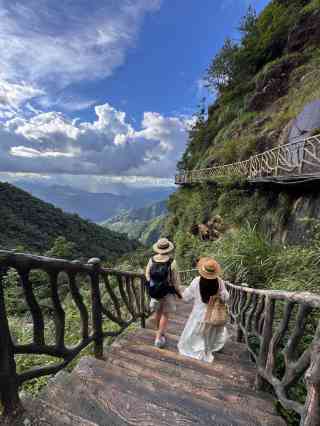
Dehua Kiln Sites.
Tickets: Prices, Booking, and Tips
When planning your visit to the Dehua Kiln Sites, it’s essential to gather information about ticket prices, booking options, and handy tips to enhance your experience.
Ticket Prices
Visiting the Dehua Kiln Sites is generally quite affordable. Entry fees typically range from 10 to 30 RMB (approximately $1.50 to $4.50 USD), making it an economical outing for travelers. Specific prices can vary depending on the particular kiln site or museum, so it’s a good idea to check in advance.
Booking Information
While some sites may allow for on-the-spot entry, especially during the off-peak season, it’s advisable to book tickets in advance if you’re visiting during peak tourist seasons or if you’re part of a larger group. You can purchase tickets through popular travel booking websites or directly at the site. For those interested in guided tours, consider booking through local travel agencies that specialize in ceramic culture.
Tips for Your Visit
-
Timing is Key: Aim to visit early in the day to avoid crowds and to enjoy cooler temperatures. The morning light also enhances your photography of the stunning porcelain art.
-
Explore Nearby Attractions: The Dehua Kiln Sites are surrounded by other fascinating destinations, such as the Dehua Ceramics Museum and Jiuxian Mountain. Plan a full day to explore these cultural treasures.
-
Photography: Bring your camera! Photography is permitted in most areas, and you’ll want to capture the intricacies of the ancient kilns and the beautiful porcelain pieces.
-
Language: While some signage is available in English, having a translation app or a guide can enhance your understanding of the rich history and craftsmanship that Dehua offers.
-
Local Cuisine: Don’t miss the chance to try local delicacies. There are several restaurants nearby offering traditional dishes that will make your visit even more memorable.
By preparing ahead and keeping these tips in mind, you’ll be set for an enriching experience at the Dehua Kiln Sites, where history and artistry converge beautifully. Enjoy your journey into the heart of porcelain culture!
How to Get There: A Complete Transportation Guide
Getting to the Dehua Kiln Sites is an adventure that blends the beauty of rural China with rich cultural heritage. Whether you’re traveling from nearby cities or farther afield, here’s how to navigate your journey to this fascinating destination.
Arrival by Air
The closest major airport to Dehua County is Quanzhou Jinjiang International Airport (JJN), located approximately 70 kilometers (about 43 miles) away. This airport offers domestic flights to major cities in China, as well as some international connections.
From the airport, you have a few options to reach Dehua:
- Taxi: This is the most convenient option. A taxi ride from the airport to Dehua will take around 1.5 hours and cost approximately CNY 200-300 (around $30-$45).
- Airport Shuttle: If you prefer a budget-friendly option, check for shuttle services that can take you to Quanzhou city center, where you can catch local buses to Dehua.
Traveling by Train
For those already in China, taking a train to Dehua is a comfortable and scenic option. The nearest significant railway station is Quanzhou Railway Station. Here’s how you can make your way to Dehua:
- From Quanzhou:
- Take a train to Dehua Railway Station. The journey typically takes about 1 hour, and tickets can range from CNY 30-50 (approximately $5-$8).
Once you arrive at Dehua Railway Station, you can take a taxi or use local transport to reach the kiln sites.
- From Xiamen: If you’re coming from Xiamen, you can also take a train to Quanzhou and then follow the steps above.
Local Transportation
Once in Dehua County, getting to the Kiln Sites is relatively straightforward:
-
Taxi or Ride-hailing Apps: Taxis are readily available, and ride-hailing apps like Didi Chuxing are widely used. The Dehua Kiln Sites, located in Baomei Village, are well-known among local drivers, making this a hassle-free option.
-
Local Buses: Public buses run frequently between Dehua town and various attractions, including the kiln sites. Be sure to check the bus schedules as they can vary, especially on weekends.
Exploring Dehua
While visiting the Dehua Kiln Sites, consider exploring other nearby attractions. You might want to check out:
-
Dehua Ceramics Museum: Located not far from the kiln sites, this museum houses a vast collection of porcelain pieces and is a great way to deepen your understanding of Dehua’s ceramic history.
-
Jiuxian Mountain Scenic Area and Shiniu Mountain National Geopark: Both offer stunning natural landscapes and are a short taxi ride away from the kiln sites.
Conclusion
With its rich history and beautiful surroundings, a trip to the Dehua Kiln Sites is both enjoyable and educational. Whether you choose to fly, take a train, or navigate local transport, you’ll find the journey as rewarding as the destination. Don’t forget to immerse yourself in the local culture and take home some exquisite porcelain as a memento of your visit to the Porcelain Capital of China!
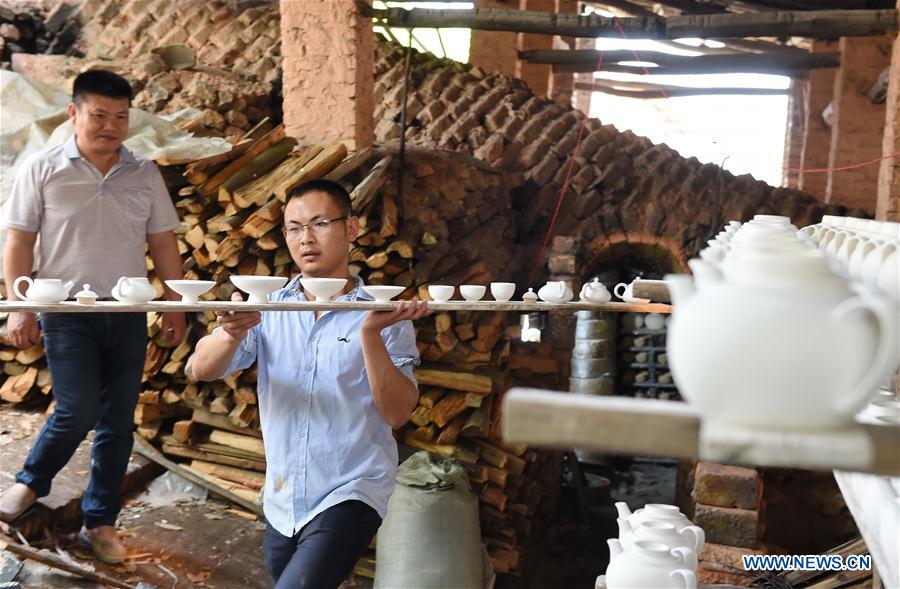
Dehua Kiln Sites.
Local Cuisine and Accommodation Nearby
When exploring the rich ceramic history at the Dehua Kiln Sites, indulging in local cuisine and finding a comfortable place to stay are essential parts of the experience. Dehua County offers a delightful blend of flavors and cozy accommodations that enhance your visit.
Dining Options
- PaPa ZhenWei
- Distance: Just a short stroll (272 ft) from the kiln site
-
Cuisine: This restaurant is known for its authentic Fujian dishes. Dive into local specialties such as Buddha Jumps Over the Wall, a rich soup with various meats and seafood, or try their delicious steamed dumplings. The warm atmosphere makes it a perfect spot for a quick lunch after your exploration.
-
Cha WuYu
- Distance: Approximately 1 mile from the kiln site
- Cuisine: If you’re in the mood for a refreshing tea experience, Cha WuYu specializes in traditional Chinese tea alongside light snacks. Enjoy a variety of tea-infused desserts and savory pastries while relaxing in a tranquil setting, ideal for unwinding after a day of sightseeing.
Accommodation
- Dehua County Hotel
- Location: Centrally located, providing easy access to the Dehua Kiln Sites and other attractions.
-
Overview: This hotel offers comfortable rooms with modern amenities. Guests can enjoy a complimentary breakfast and access to a fitness center. Its proximity to local eateries and shops makes it a convenient choice for travelers.
-
Bai Yi Hotel
- Location: A short drive from the kiln sites, situated near scenic areas like Jiuxian Mountain.
-
Overview: Bai Yi Hotel blends traditional Chinese architecture with modern comforts. Enjoy spacious rooms, an on-site restaurant serving local dishes, and lovely views of the surrounding landscape. The hotel staff can assist you with travel arrangements to nearby attractions.
-
Yunlong Valley Eco-Lodge
- Location: Nestled in the picturesque Yunlong Valley, about 10 km from Dehua County.
- Overview: For those seeking a more immersive nature experience, this eco-lodge provides a serene retreat surrounded by lush greenery and waterfalls. It’s an excellent base for hiking, and you can savor homemade meals prepared with fresh, local ingredients.
Final Thoughts
While visiting the Dehua Kiln Sites, be sure to indulge in the local culinary delights and enjoy a restful stay at one of the nearby accommodations. This combination will not only enhance your appreciation of Dehua’s rich culture but also provide you with a memorable travel experience.
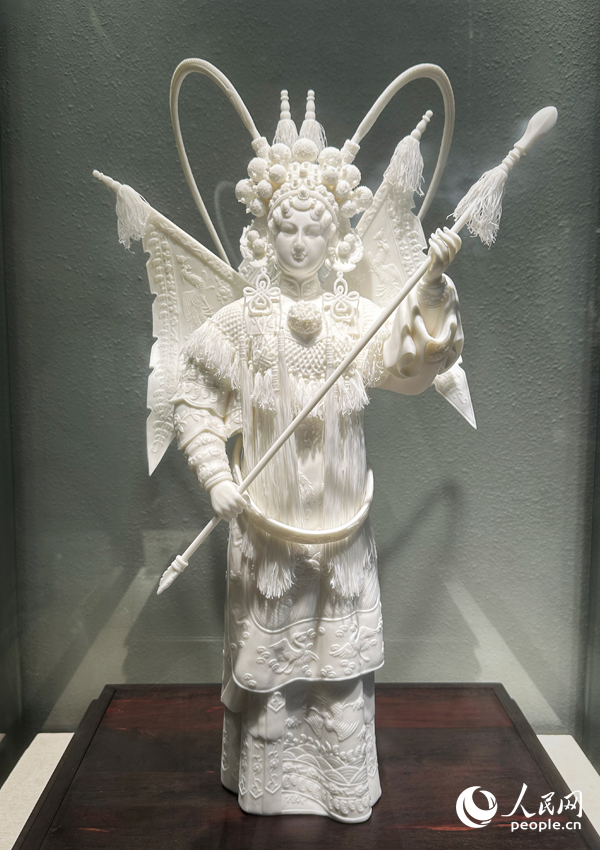
Dehua Kiln Sites.
Frequently Asked Questions
Frequently Asked Questions for Travelers to Dehua Kiln Sites
1. What are the Dehua Kiln Sites?
The Dehua Kiln Sites are historical locations in Dehua County, Fujian Province, China, renowned for their traditional porcelain production. These sites feature ancient kilns, particularly the famous dragon kiln, where the exquisite blanc de chine ceramics were crafted, making Dehua a key player in porcelain history.
2. How do I get to the Dehua Kiln Sites?
To reach the Dehua Kiln Sites from Quanzhou, you can take a bus or hire a taxi. The journey typically takes around 1.5 to 2 hours. If you’re traveling from Xiamen, trains and buses are available, providing a scenic route through Fujian Province.
3. Are there guided tours available?
Yes, many local tour operators offer guided tours of the Dehua Kiln Sites, including visits to nearby ceramic factories and workshops. These tours often provide insights into the porcelain-making process and the cultural significance of the ceramics produced in the region.
4. What are the opening hours and entrance fees?
The Dehua Kiln Sites are generally open from 9 AM to 5 PM daily. Entrance fees may vary depending on specific sites and tours, so it’s advisable to check in advance or inquire at your hotel for the latest information.
5. Is there English signage available at the sites?
Yes, many of the sites, including the dragon kiln, have English signage to help international visitors understand the historical and cultural context of the porcelain-making tradition in Dehua.
6. Can I take photos at the Dehua Kiln Sites?
Absolutely! Photography is allowed at the Dehua Kiln Sites, so feel free to capture the stunning designs and intricate details of the ceramics as well as the unique architecture of the kilns.
7. What is the best time to visit the Dehua Kiln Sites?
The ideal time to visit is during spring (March to May) and autumn (September to November) when the weather is pleasant and the landscapes are particularly beautiful. These seasons also coincide with local festivals celebrating ceramic arts, enhancing your experience.
8. Are there nearby attractions to explore?
Yes, the area surrounding the Dehua Kiln Sites boasts several attractions. Nearby, you can visit the Dehua Ceramics Museum, the scenic Jiuxian Mountain, and Shiniu Mountain National Geopark. Each offers a unique glimpse into the natural beauty and cultural heritage of the region, making for a well-rounded trip.
Final Thoughts on Your Trip
As your journey through Dehua comes to a close, take a moment to reflect on the rich tapestry of history and artistry you’ve encountered at the Dehua Kiln Sites. This destination, often hailed as the “Porcelain Capital of China,” is not just about the exquisite ceramics that have captivated collectors for centuries; it’s a celebration of craftsmanship, tradition, and the enduring connection between nature and art.
Wandering through the remnants of ancient kilns, you have glimpsed the dedication and skill that generations of artisans have poured into their work. The stunning landscapes of Jiuxian and Shiniu Mountains, alongside the serene valleys and vibrant local communities, offer an inspiring backdrop to the stories behind each piece of porcelain.
Whether you marveled at the elegance of Blanc de Chine or delved into the intricacies of the ceramic-making process, the memories of Dehua will linger long after your visit. Your experience here not only enriches your understanding of the world of ceramics but also invites you to appreciate the cultural heritage that shapes our global community.
As you depart, carry with you the spirit of Dehua—its artistry, its history, and its breathtaking landscapes. May your travels continue to inspire and connect you with the stories and cultures that make our world so wonderfully diverse.